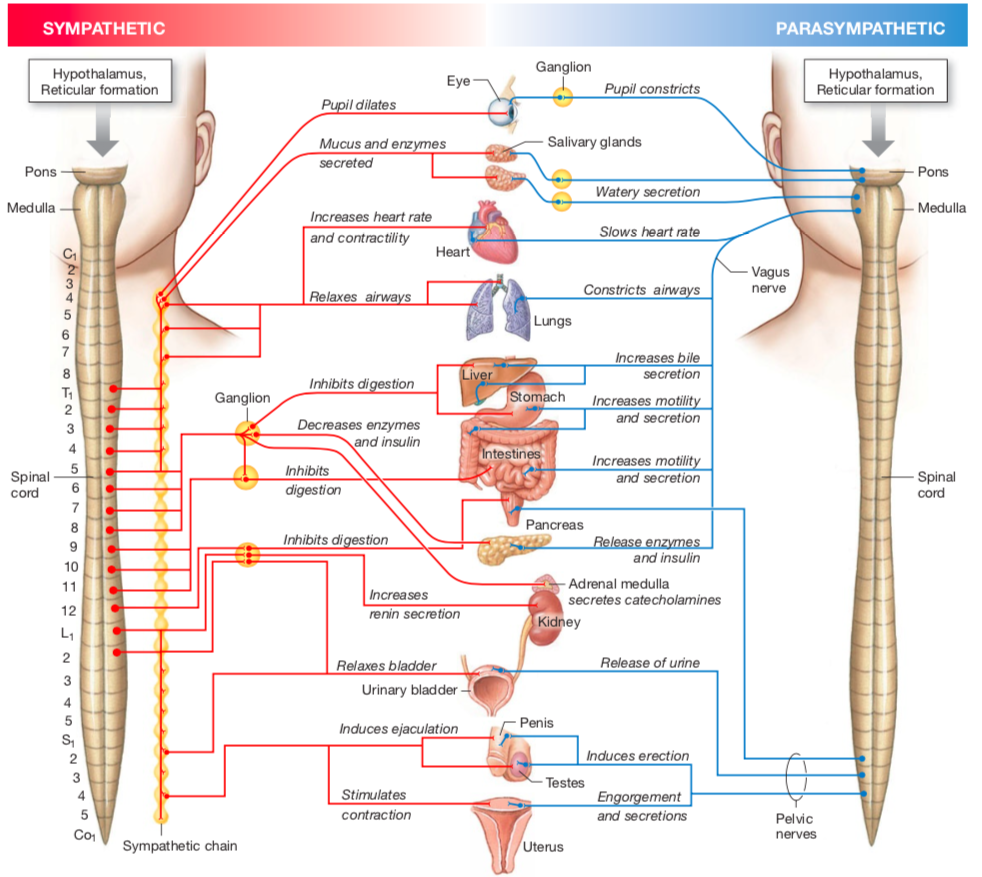Sympathetic Dominance
The sympathetic nervous system (SNS) and parasympathetic nervous system (PNS) are two vital divisions of the autonomic nervous system (ANS). These play a role in the involuntary processes of the body with the exception of breathing which is controlled by the autonomic nervous system as well as with conscious effort.
SNS is associated with stressful, dangerous, and active situations. When experiencing an extremely dangerous situation, like an encounter with a lion, the SNS enters a response called the ‘fight-or-flight’ response. In majority of daily life, we are not in full blown ‘fight-or-flight’, our body maintains a balance of SNS and PNS pathways to keep us in homeostasis. When we are in a state of stress in daily life, the sympathetic branch becomes dominant and the parasympathetic branch becomes repressed. This imbalance in favor of SNS is termed sympathetic dominance. It defines human condition: humanity as a whole suffers its consequences. It causes the body to mostly operate on sympathetic stimulation which causes many negative health effects.

The figure abouve shows the potential effects of sympathetic dominance. Stress is tts first symptom; it can bemental and physical. Sympathetic dominance puts the body understress. Under the influence of sympathetic dominance, blood flow to the internal organs is reduced and directed towards our muscles to be able to become active for any event. This causes our bodies to go into a catabolic state (breakdown state) since we have to use our resources for more energy. Our bodies also produce a lot of cortisol which is a hormone that is released when the body is in need of using the stored energy. During high levels of cortisol, we have breakdown of skeletal muscle proteins, with an overall high demand for energy sources. There is also a change in the calcium balance, leading to breakdown of bone tissue. In terms of brain function, cortisol is responsible for mood changes and differences in learning abilities. The overactive SNS does not allow the body to go into an anabolic state to repair, build, and digest since it represents the parasympathetic system. Some of the symptoms of a dominant SNS are: restlessness, trouble sleeping, decreased immune system function, anxiety, fast heart rate, tense muscular system, shallow breathing caused by fast heart rate and tense abdominal muscles, decreased libido, and the feeling of fatigue most of the time.
The SNS is an essential part of our nervous system; our survival depends upon it. However, an overactive and dominant SNS is an unbalance which strays the body away from homeostasis (balance).
Constant worry and dwelling on certain events in the future or past are likely to stimulate our sympathetic nervous system and increase our cortisol levels. Our response is perfectly normal, but our body thinks that our stress over future events is real immediate danger and wants to protect itself. The practices of regulated breathing and meditation are helpful in controlling negative emotions, and the many physiological changes that are produced through these emotions. These practices enable you to calm your body and enter into a state of lowered sympathetic activity and shift toward parasympathetic activity. A slowed down heart and breathing rate induce calm through the body-mind complex. Focused on our breath and in a state of inner peace, our emotions are not able to push our body into a threatened state of mind. These positive changes can happen almost immediately, just like how the fight-or-flight response can activate in the snap of our fingers.
Reference:
Silverthorn, Dee Unglaub. 2007. Human physiology: an integrated approach. San Francisco: Pearson/Benjamin Cummings.
- Log in to post comments
